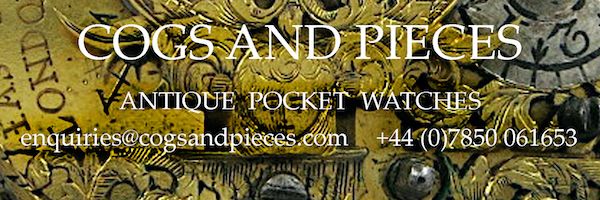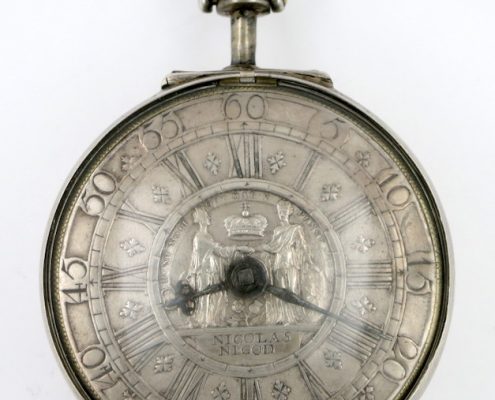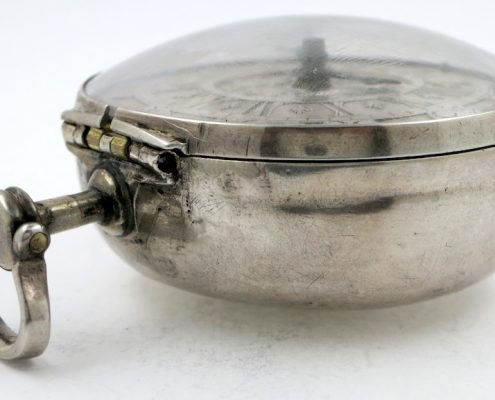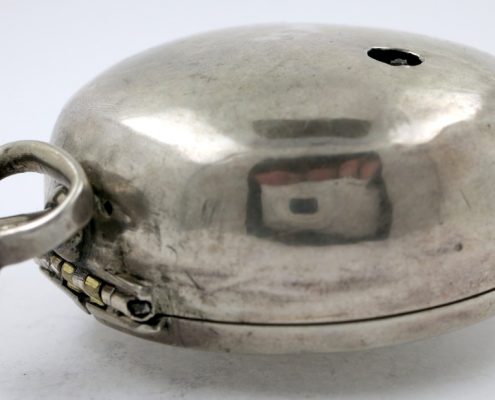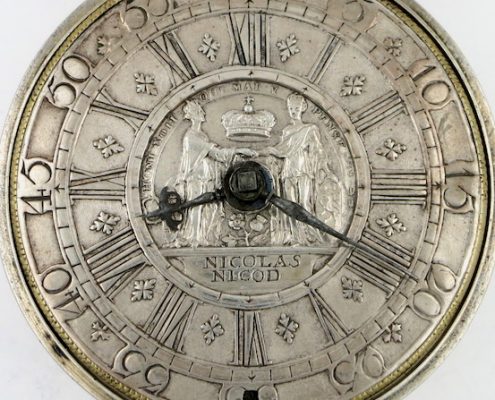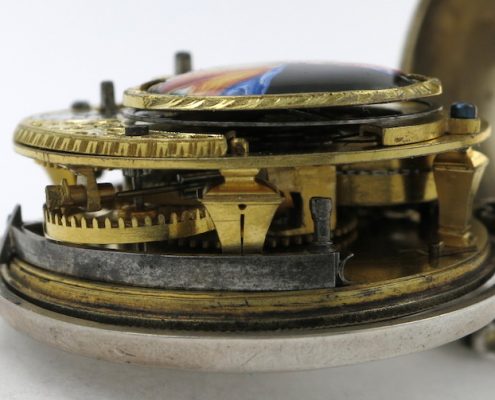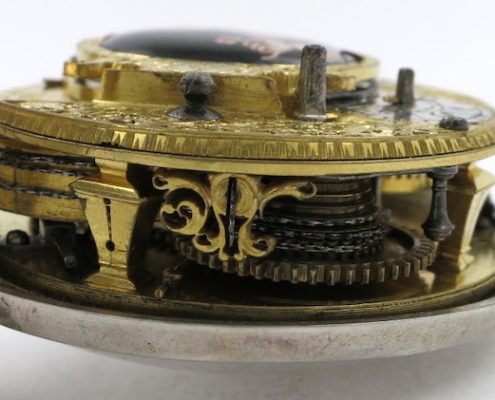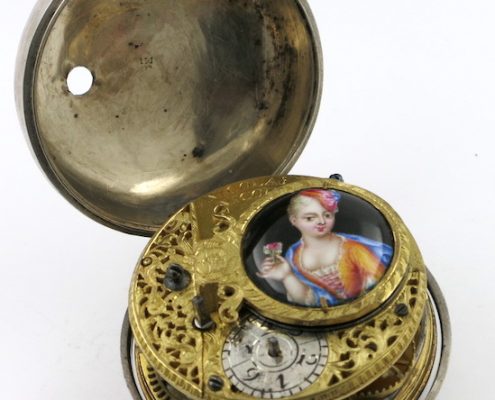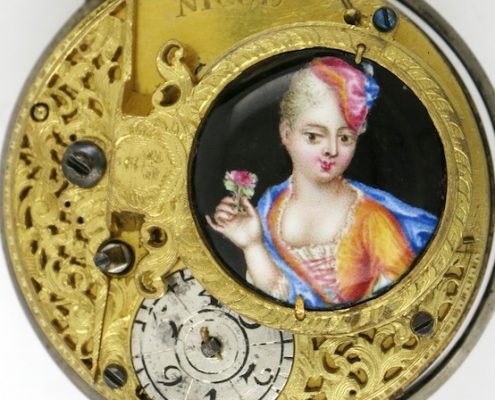Silver verge, celebrating the Act of Union 1707
Stock No. 1715
Nicolas Nicod
Swiss or London, c1707
Silver case, 50 mm.
Verge escapement
Sold
An early verge, with a fine enamel portrait of a young woman on the balance cock and a wonderful silver champleve dial, celebrating the Act of Union between England and Scotland in 1707.
MOVEMENT : Gilt verge movement, with wonderful enamel portrait covering the large engraved winged balance cock. Four fine Egyptian pillars.
Signed “NICOLAS NICOD”.
The enamel portrait is original (the balance bridge is solid brass, rather than pierced), and in fine condition with no repairs or overpainting, and only some tiny chips around the edge. The movement is in very good condition, with just a little damage to the pierced gilt gate of the stop work (a piece of the right hand side missing). The movement is running well.
DIAL : A wonderful silver champleve dial, in very good condition. Signed “NICOLAS NICOD” below insignia celebrating The Act of Union. These include a banner inscribed “Honi soit qui mal y pense” above a crown and two images of Queen Anne, one with a shield showing the three lions on England and the other shield showing the single lion of Scotland. All above a rose and thistle.
In very good condition, though the black infill is missing from much of the engraved surface.
Good 18th century blued steel beetle and poker hands.
CASE : Deep silver case, with maker’s mark MI below a crown.
The case is in good condition with just some small bruises to the sides. The bezel closes correctly and snaps shut. The stem has been reattached. The high dome crystal is fine.
The watch would probably originally have had a silver outer pair case, which is now absent.
There are watchmakers named Nicod listed in Switzerland during the 18th century, so Nicolas Nicod may have been a Swiss maker working in London, or may have been working in Switzerland for the English market.
“Honi soit qui mal y pense” is a French term used as the motto of the British chivalric Order of the Garter. In 1707 Queen Anne gave the royal assent to The Act of Union between England and Scotland, to form the new Great Britain. Queen Anne attended a service of thanksgiving at St Paul’s Cathedral in London, wearing the Order of the Garter.
Royal motifs on watches of this period were a very important means of showing allegiance to the crown. This was shortly after the ‘Glorious Revolution’ of 1688-1689 when the Catholic James II was replaced by his Protestant daughter Mary (with her Dutch husband William of Orange) and subsequently in 1702 by her sister Anne.
